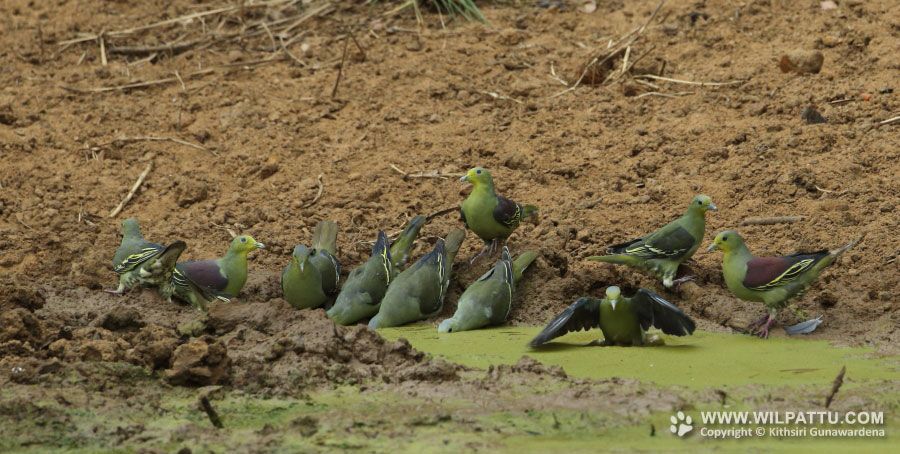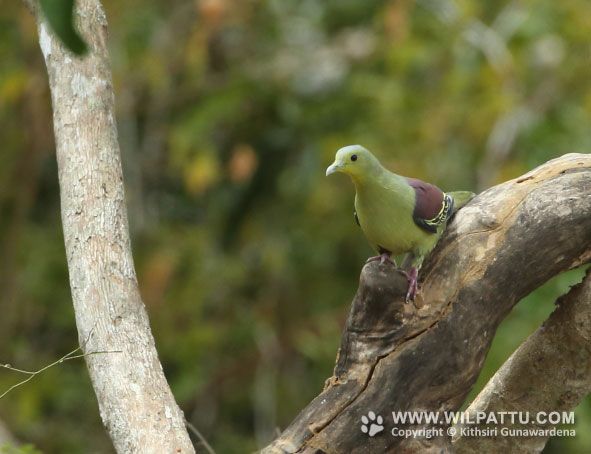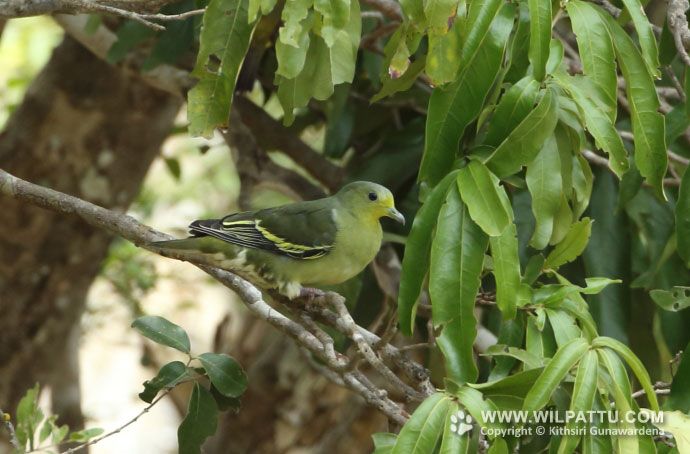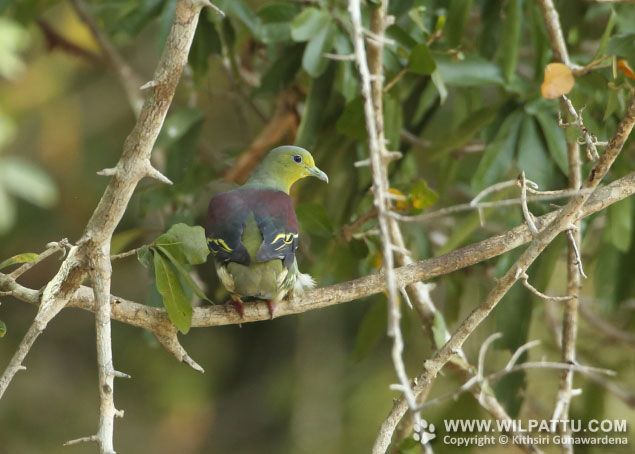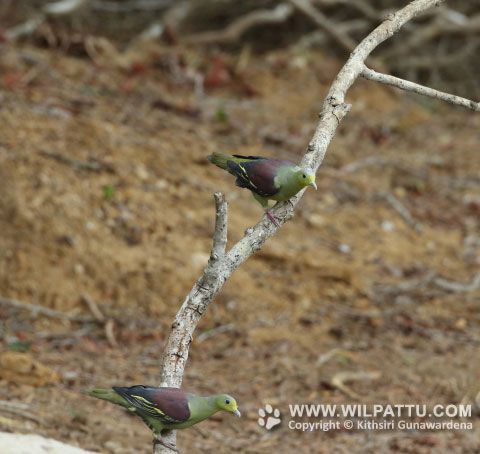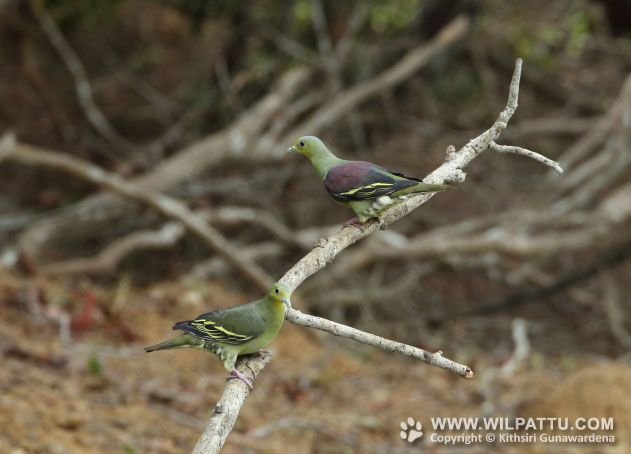
Birds ‹‹ Go Back
This is a species endemic to the country. It is found in forests and well-wooded areas of the lowlands and mid hills. The mantle of the male is maroon in colour.
The conservation status of this species is regarded as Least Concerned (National Red List 2012).
Pompadour green Pigeon is a species protected under the Fauna and Flora Protection Ordinance as amended by Act No. 22 of 2009.
I have observed good populations of this species in all the large wet zone forest reserves such as Sinharaja, Peak Wilderness, Kitugala and Knuckles. They are also found in fragmented small forest patches in the wet zone, protected primarily due to the forest hermitages located inside these forests, such as Dombagaskanda, Salgala, Meethirigala, Kalugala and Labugama. The highest altitude at which I have observed this species has been at Karambaketiya in the Knukles forest reserve at 1300 meters. In April 2006 I observed a flock of these birds feeding on the tiny berries of a Gaduba tree Trema orientalis at the Moratuwa University premises. I have also seen them around the Bolgoda Lake and the Muthurajawela Marsh. In March 2014 I was thrilled to see one of these pigeons flying off from a Large Bo tree Ficus religiosa located in the compound across the road from my home garden.
It is found in all the forest patches in the intermediate zone and quite common in all the dry zone national parks. In the north I have observed them at the Veruwil forest reserve just below Punareen but never saw it in the Mannar Island.
These pigeons have a remarkable ability to conceal them selves among the foliage by freezing when they detect any danger such as being approached by humans. They feed on small fruits of species such as Banyan, Bo, Madan and Palu. When these trees are in fruit in a forest these pigeons will invariably visit these trees in large numbers. In the dry zone they are often accompanied by Orange-breasted Green Pigeons. This pretty pigeon has a beautifully modulated human like mellow whistle, which is often heard, in the forested areas. Even though the call is heard locating them in a tree, even with a pair of binoculars, can be quite hard. If one is patient and is willing to wait for some time, observing the tree where the calls emanated the quarrelsome nature of this species will often result in a few having to move from their concealed positions among the foliage making it easy to detect them.
This species is quite common in Wilpattu but is seldom seen and is difficult to photograph. When the Banyan tree Ficus benghalensis, opposite the Tala Wila bungalow is in fruit these pigeons accompanied by Orange-breasted Green Pigeons and Green Imperial Pigeons can be seen feeding on the ripe berries throughout the day. The best way to photograph them at Wilpattu is to wait at a water hole during the dry season (end July to mid September) where they visit during midday for a quick drink.

